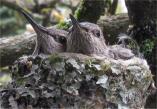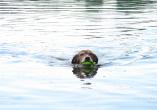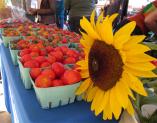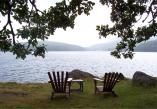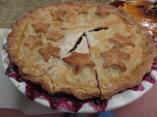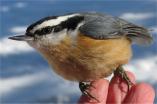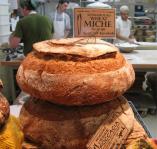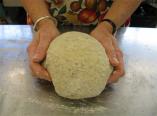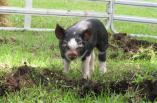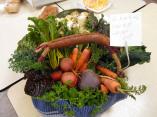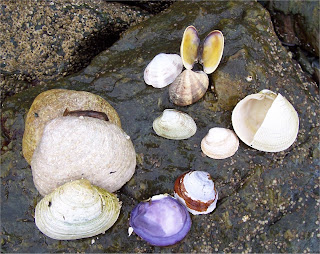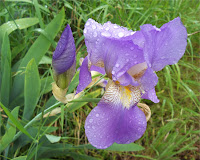Nancy sent me this excellent article about the danger bees are in in this world of industrial farming, dependent on pesticides and monocultures. Several of the points were already made in Michael Pollan’s December article in the New York Times, and it was discussed in some detail on 60 Minutes last October as well, but I liked the links on this one, like the “10 things you can do to help honeybees” piece. I also came across this excellent site which has some interesting photos of varroa mites and what they can do to a hive.
Our bee-keeping class met one last time at the farm of our instructors. It was a good chance for the novice bee-keepers to ask some questions, and we got to see and do a number of things before sitting down to tea and cookies.
There was another lesson in marking queens. This picture shows why marking a queen is a good idea; this is a close-up of one side of a frame. Imagine hunting through both sides of 18-20 frames to find your queen. She can prove elusive, particularly if she is busy laying when you look, so she might be waist-deep in a cell and not all that conspicuous. Here you can probably spot her: she is in the centre of the picture with a longer darker abdomen than the others. It takes some practice to find her, particularly when drones are around as they are darker and longer, but have blunt back ends. This queen is surrounded by workers who are shorter and resemble her less.

Pick up your bee (these are drones, used for practice, and sent back to a life of humiliation and teasing by the other bees)…

Transfer it to your other hand, holding its legs, and mark with a marker (different colours for different years: yellow queens, here, are ones that were born last year; this year we’re using red).

Eeeee, lemme go!

A clever device to trap and mark a queen without having to pick her up.

The marked queen – see the dot of yellow – is a little easier to spot in a crowd.

A couple of variations of queen cages: in both cases the cages allow transport or safe introduction of a queen to a new hive.


Larry thumps some bees. “They drop like jellybeans” he says.

Some very keen bees felt this half frame was too short, and built an extension on the bottom.

When Larry speaks, we all listen.

Bee art.

Eggs in situ: tiny but visible, like short bits of thread.

…and then they become larvae. More like shrimp at this stage.

